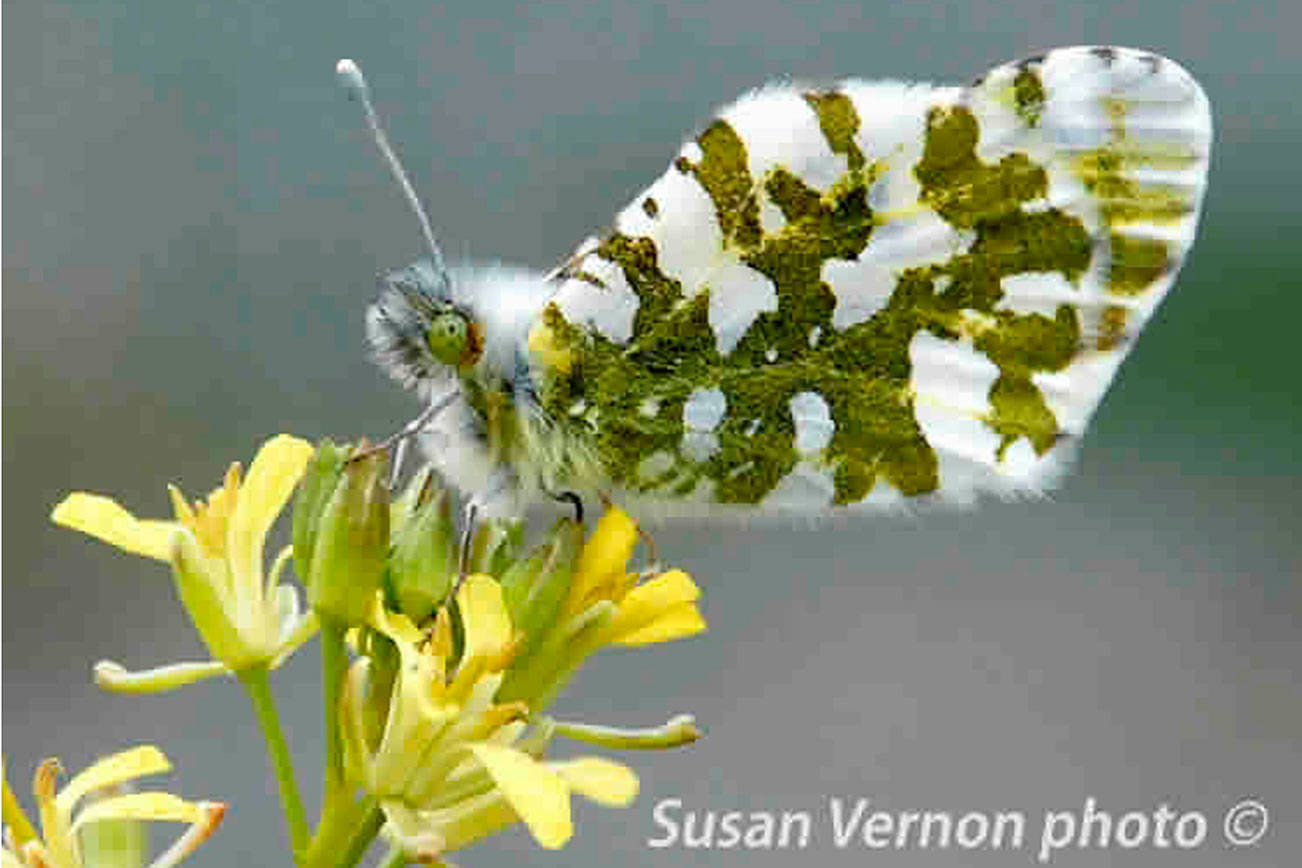Submitted by the U.S. Fish and Wildlife Service
When a biologist from the Washington Department of Natural Resources discovered the island marble butterfly on San Juan Island in 1998, the U.S. Fish and Wildlife Service (Service) began actively working with agencies and local landowners to implement voluntary conservation actions that would prevent this tiny pollinator from disappearing. The encounter in 1998 was the first time the butterfly had been seen since the early twentieth century.
Despite these attempts, the butterfly’s numbers continued to decline. In an effort to preserve the butterfly from extinction, the Service is proposing to list the island marble butterfly (Euchloe ausonides insulanus) as endangered and to designate critical habitat for the species under the Endangered Species Act.
“There has been tremendous effort to assist the island marble butterfly over the years,” said U.S. Fish and Wildlife Service Washington State Supervisor Eric Rickerson. “But given the small population size, the threats to this species are significant. We will continue to work collaboratively with organizations and individuals on San Juan Island in our shared concern for the continued survival of this species.”
The small population of the butterfly makes them especially vulnerable to threats, including habitat loss and predation. Although 2017 counts were higher than in 2016, still fewer than 200 adult island marble butterflies were observed in surveys conducted in 2017.
A public comment period on the proposed rule is open through June 11, 2018. The public is invited to submit written comments at www.regulations.gov or via regular mail or hand delivery to: Eric V. Rickerson, State Supervisor, Washington Fish and Wildlife Office, 510 Desmond Drive SE, Lacey, Washington 98506. Comments may be submitted on or before June 11, 2018.
The Service is also proposing the designation of approximately 813 acres of occupied critical habitat for the island marble butterfly. The lands being proposed for designation are more than 90 percent federal ownership; approximately 5 percent state ownership; 4 percent county ownership; and less than 0.5 percent private ownership.
The Service and many partners continue to work toward conservation and recovery of the butterfly. A few outstanding examples are the National Park Service’s captive rearing program and habitat enhancement on American Camp, where the last remaining known population of island marble butterfly exists. American Camp is a part of San Juan Island National Historical Park on San Juan Island, Washington.
In an effort to support habitat expansion for the butterfly, the San Juan Preservation Trust has begun a habitat enhancement project to discover how specific plantings and protection from predation can assist in butterfly survival.
“Land trusts can play an important role in species recovery,” Kathleen Foley, Stewardship Manager at the San Juan Preservation Trust, said. “Habitat enhancement projects will determine if the new habitat patches can attract the butterfly and support it through all its life stages. If successful, the butterfly could exist on our conservation lands in perpetuity.”
To read the Federal Register notice, or for more information about management activities and conservation of the island marble butterfly visit www.fws.gov/wafwo.



